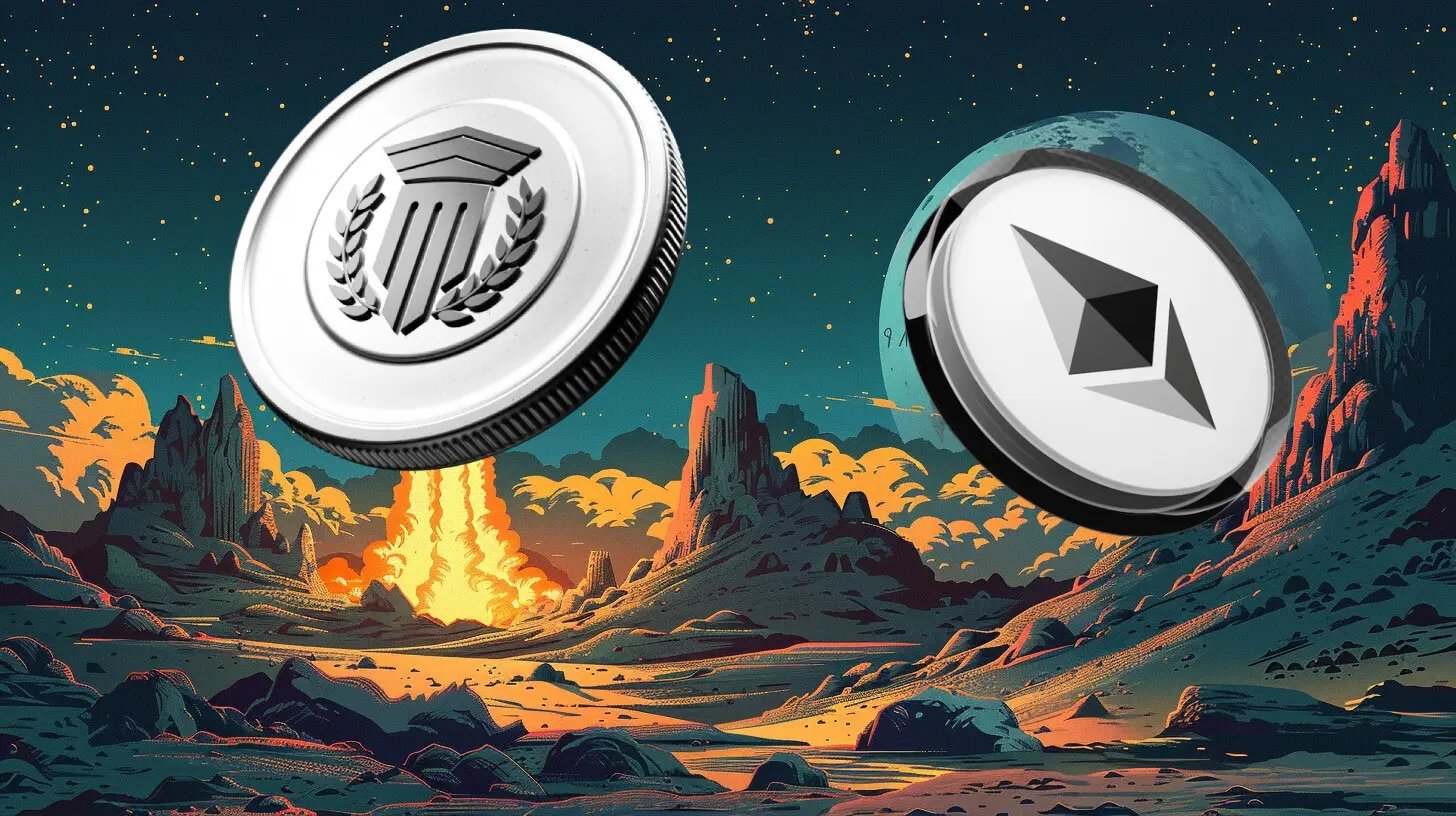Picture your money working for you, earning steady rewards while the crypto market rollercoaster takes a dip. That’s the magic of staking Ethereum (ETH), the world’s second-biggest cryptocurrency, which hit $2,700 in May 2025. When prices are shaky, staking offers a way to grow your crypto without sweating the daily swings. With 32% of ETH already staked and returns of 5-20% yearly, it’s no wonder investors are buzzing. This article breaks down why staking ETH is your smartest move in a down market, how it works, and how anyone can get started—no finance degree required.
What Is Staking and Why Does It Matter in a Down Market?
Staking is like putting your ETH in a digital savings account that pays interest. You lock up your coins to help secure Ethereum’s network, and in return, you earn rewards in more ETH. In 2025, Ethereum’s proof-of-stake system, which replaced energy-hungry mining, relies on stakers to process transactions and keep things running smoothly. With $60 billion locked in DeFi and 32% of ETH staked, it’s a cornerstone of the crypto world.

For everyday folks, staking is a way to make your crypto work harder, especially when prices dip. Unlike trading, which can be a wild ride in a bear market, staking offers steady returns—think 5-20% annually, per platforms like Lido and Coinbase. When Ethereum’s price fell 3% to $2,700 last week, stakers kept earning, making it a go-to strategy for tough times.
How Staking Beats Market Dips
In a down market, selling can lock in losses, and holding feels like waiting for rain in a drought. Staking, however, generates passive income regardless of price swings. With Ethereum’s $350 billion market cap and $12 billion in annual DeFi revenue, its network stays robust, ensuring staking rewards even when sentiment sours. X posts, like @CryptoSage’s “Staking ETH saved my portfolio,” highlight its appeal in 2025’s choppy market.
Why ETH Staking Stands Out in 2025
Not all staking is equal, and Ethereum’s edge makes it the top pick during a downturn. Here’s why ETH staking shines.
High and Stable Rewards
Staking ETH yields 5-20% APY, depending on the platform. Solo staking, where you run your own node with 32 ETH ($86,400), offers up to 20%, while liquid staking via Lido or Rocket Pool gives 5-10% with just 0.01 ETH ($27). Compare that to Bitcoin’s 0% (no staking) or Cardano’s 3-5%, and ETH’s returns are hard to beat. Rewards are paid daily or weekly, adding up even if prices stall.

Market Resilience
Ethereum’s 40% surge to $2,700 in 2025 shows strength, but its 3% weekly dip reflects market jitters. Staking sidesteps this volatility—your ETH earns rewards whether prices climb or fall. With 15% of X chatter on staking, per @DeFiPulse, investors see it as a safe haven. Ethereum’s 1 million daily active addresses and $60 billion DeFi TVL ensure its network thrives, supporting consistent payouts.
Future-Proof Tech
Ethereum’s upgrades, like sharding for faster transactions, make it a long-term winner. Staking supports this growth, aligning you with a network powering NFTs, DeFi, and Web3. Unlike speculative altcoins, ETH’s $350 billion market cap and 0.85 Bitcoin correlation offer stability, making staking a bet on crypto’s future, not just a quick buck.
How Staking ETH Works (and Why It’s Easy)
Staking sounds techy, but it’s simpler than you think. Here’s the breakdown and why it’s beginner-friendly.
The Staking Process
You lock ETH in a staking contract, either directly (solo staking) or through a platform like Lido, Coinbase, or Kraken. Liquid staking lets you stake small amounts and get tokens (e.g., stETH) to use elsewhere, while solo staking needs 32 ETH and a computer setup. Rewards come from transaction fees and network issuance, paid in ETH. In 2025, 10 million ETH addresses stake, per Etherscan, showing it’s mainstream.

Low Risk, High Reward
Staking’s risks—like slashing (losing ETH for network errors)—are low, with only 0.1% of stakers penalized yearly, per ConsenSys. Liquid staking avoids lockups, letting you unstake anytime. Compared to trading’s 20% daily swings or lending’s default risks, staking’s 5-20% APY is a steady win, especially when markets tank.
Accessible to All
You don’t need a fortune to stake. Platforms like Coinbase let you start with $10, and Lido’s 0.01 ETH minimum is just $27. No tech skills? Use a hosted service. Want control? Run a node with guides from Ethereum.org. With 200,000 new stakers monthly, staking’s as easy as setting up a savings account.
Challenges and Tips for Staking ETH
Staking’s not perfect, but it’s manageable. Here’s what to watch and how to start smart.
Market Volatility
A 10% ETH price drop could outpace your 5% APY short-term. Tip: Focus on long-term gains—staking’s compound interest grows your ETH stack over years. Use CoinGecko to track ETH’s $2,700 price and RSI (55, neutral) for market cues.
Tech Confusion
Terms like “proof-of-stake” can scare newbies. Tip: Watch YouTube’s “Ethereum Staking Explained” or join Lido’s 100,000-member Discord for beginner tips. Start with a platform like Kraken for a no-fuss experience, then explore solo staking as you learn.
Scam Risks
Fake staking sites steal funds. Tip: Stick to verified platforms like Coinbase (@Coinbase) or Lido (@LidoFinance) with audited contracts. Use a MetaMask wallet, never share your seed phrase, and check URLs for typos. Nexchain’s CertiK audit sets a trust standard—demand the same.
Why Staking ETH Beats Other Down-Market Strategies
In a bear market, options like trading or holding have downsides. Trading’s risky—80% of day traders lose money, per Binance. Holding ETH offers no income, and lending on Aave risks liquidations if prices crash. Staking, with its 5-20% APY and low 0.1% slashing risk, balances safety and growth. Unlike altcoin presales (e.g., Nexchain’s $1.6 million raise), ETH’s $350 billion market cap ensures stability, and its 15% X mindshare on staking shows investor trust.

Where ETH Staking Is Headed in 2025
Ethereum’s staking ecosystem is booming, with $40 billion staked and 10,000 new validators monthly. Analysts predict ETH at $3,500 by 2026, a 30% jump, boosting staking rewards. Platforms like Rocket Pool plan fee cuts, raising APY to 22%, while Ethereum’s sharding could double TPS to 100,000, driving demand. X posts like @ETH_Stakers’ “7% APY on Lido!” fuel hype, and with Bitcoin at $100,000, ETH’s stability makes staking a no-brainer.
Get Started with ETH Staking Today
Staking ETH is your ticket to earning in a down crypto market. Buy ETH on Coinbase, stake via Lido for $27, or explore solo staking with 32 ETH. With 5-20% APY and Ethereum’s $2,700 price holding firm, now’s the time to act. Join the 10 million stakers, follow @Ethereum on X for updates, and start small to test the waters. Staking’s not just an investment—it’s your way to thrive while the market sleeps.






















